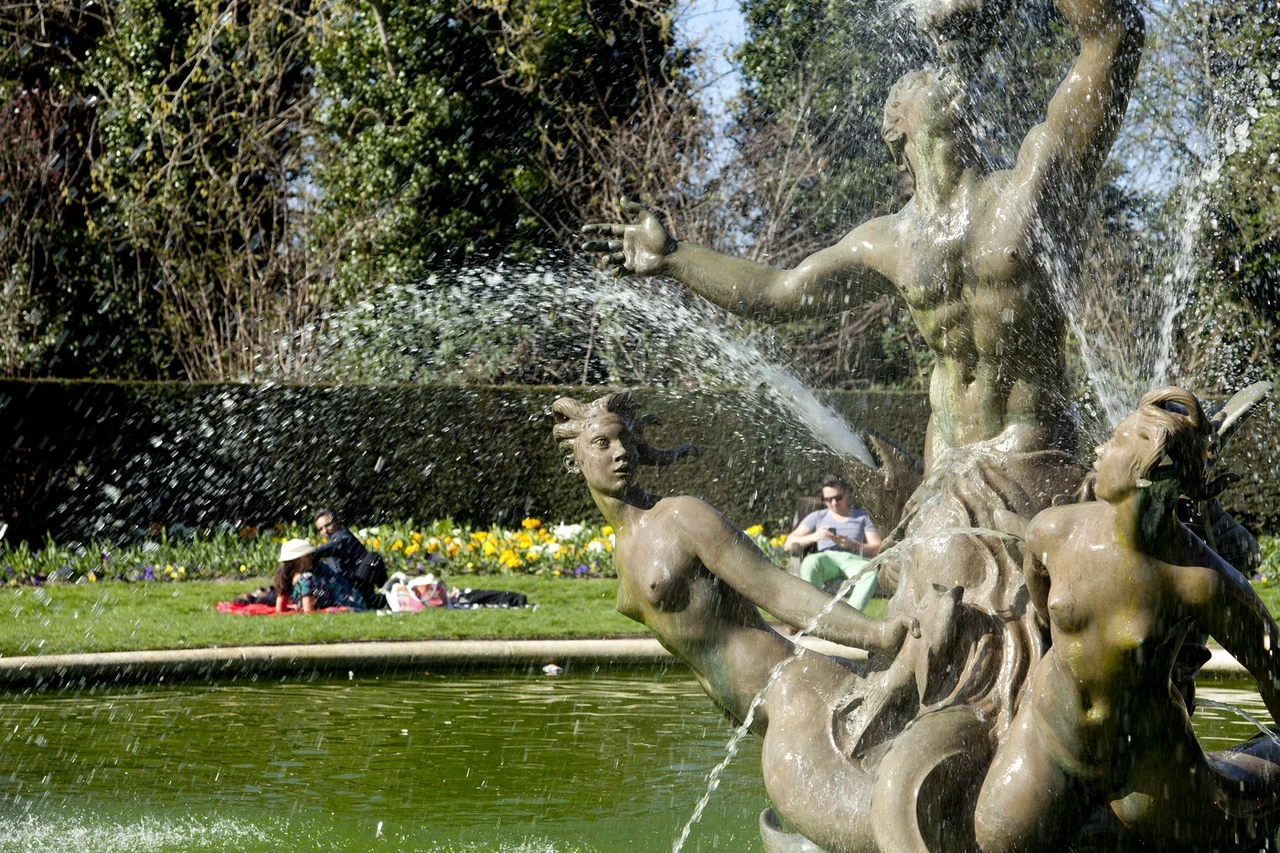
Monuments in The Regent's Park & Primrose Hill
Key information
Opening times (pedestrian gate)
5am - 9pm, vehicle gates 7am - midnight
Food & drink available
The Regent’s Park is known for its fine horticulture, vistas and landscapes. Nearby Primrose Hill is celebrated for the stunning views of London from its summit.
Both parks are also home to unique memorials. In Regent’s Park the Ready Money drinking fountain – one of the largest in London – can be seen to the north of the Boardwalk. This striking landmark was a gift from a wealthy Indian industrialist – ‘Ready Money’ was his nickname!
Sticking with the theme of water, make sure you take a look at the famous Triton Fountain. A group of bronze sculptures crown the picturesque Queen Mary’s Gardens.
The Griffin Tazza – often called the ‘Lion Vase’ – sits in the Avenue Gardens. Four winged lions hold a large stone bowl, filled with plants. This is one of about 30 ornate planters in this pretty part of the park.
Next time you’re admiring the view from Primrose Hill, don’t forget to look down – you might spot a plaque commemorating Iolo Morganwg – a Welsh Bard who died in 1826.
To find out more about these landmarks and discover other things to see, explore the links below.
| Monuments index |
|---|
Boy and Frog statue
The Boy and Frog statue, located in Queen Mary's Garden, is a bronze figure of a boy and a frog sitting on a pedestal of Finnish granite, set in a pond.
This Grade II listed statue was donated by Sigismund Goetze, a local artist and support of The Regent's Park. It was designed by Sir William Reid Dick in 1936.
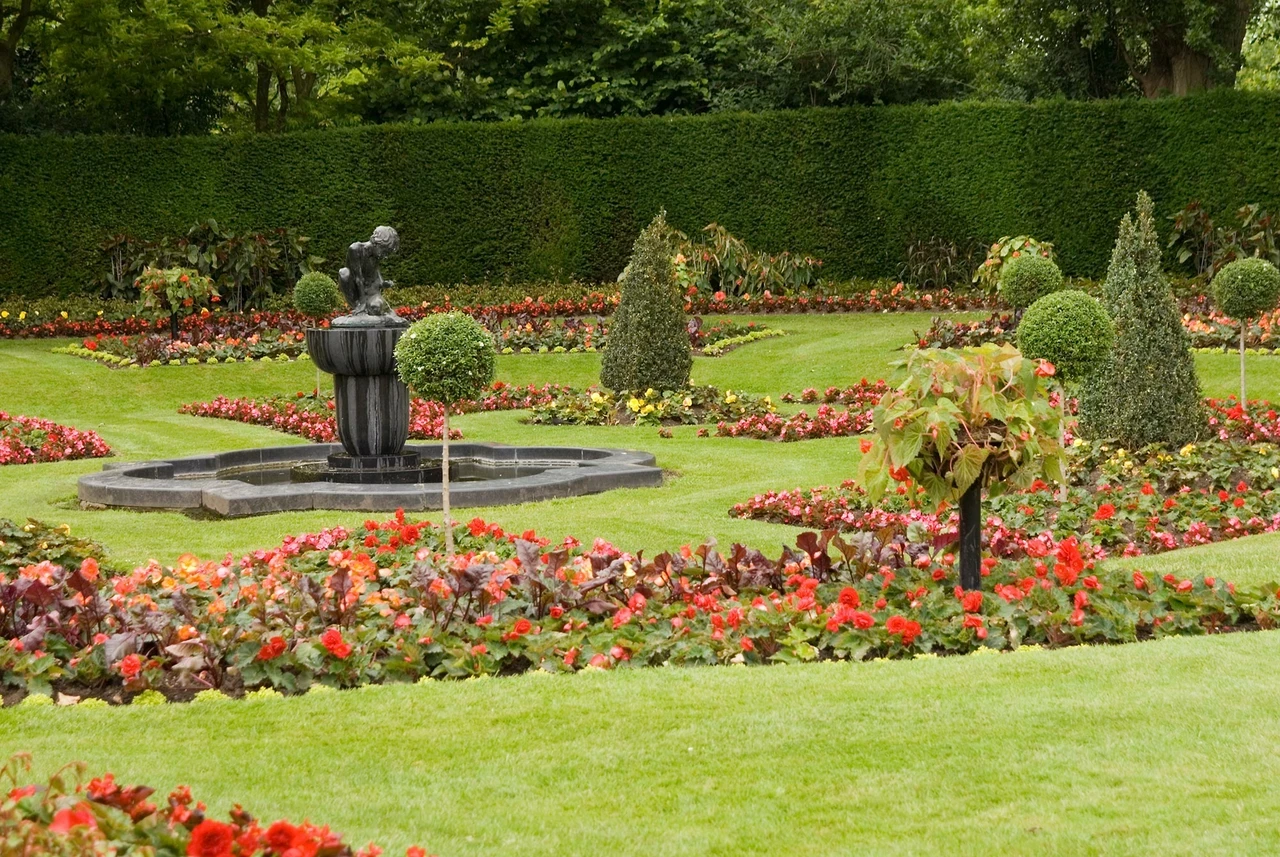
Griffin Tazza (lion vase)
To the left of the main path in the centre of the Avenue Gardens, stands a large circular stone bowl supported by four winged stone lions, known as the Griffin Tazza (often called the Lion Vase).
The Griffin Tazza was designed by Austin and Seely and installed in the Gardens by William Andrews Nesfield in 1863.
It was later repaired during the restoration of the gardens in 1993-1996 and is one of about 30 stone vases in the Avenue Gardens.
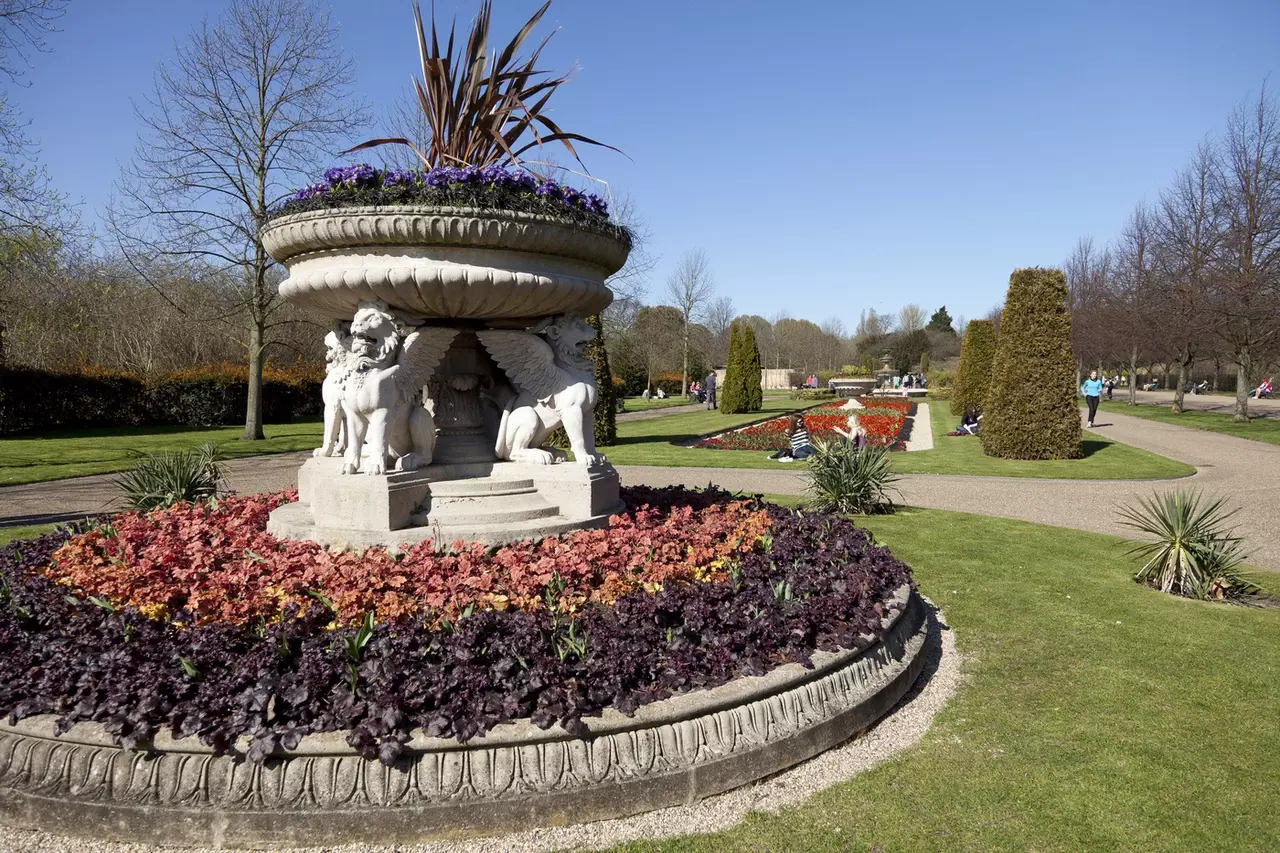
Holme Green bandstand
The main bandstand in The Regent's Park is located on Holme Green, between the boating lake and Inner Circle. It was moved from Richmond Park to The Regent's Park in the 1970s.
On 20th July 1982, the bandstand was the target of a terrorist attack by the IRA. Seven bandsmen were killed and a further 24 injured during a concert by the band of the Royal Green Jackets. Eight members of the public, who were watching the performance, were also taken to hospital with injuries sustained in the bombing.
Today there is a small memorial plaque on the base of the bandstand that commemorates the seven bandsmen who were killed. Each year the attack's survivors, and the families of those who were killed, gather here for a short but poignant memorial service.
Two years after the bombing, the composer George Lloyd wrote Royal Parks For Brass Band, the second movement of which, In Memoriam is dedicated to the bandsmen who died. The piece still features in many band repertoires.
An earlier bandstand stood near the south-east corner of the boundary of London Zoo.
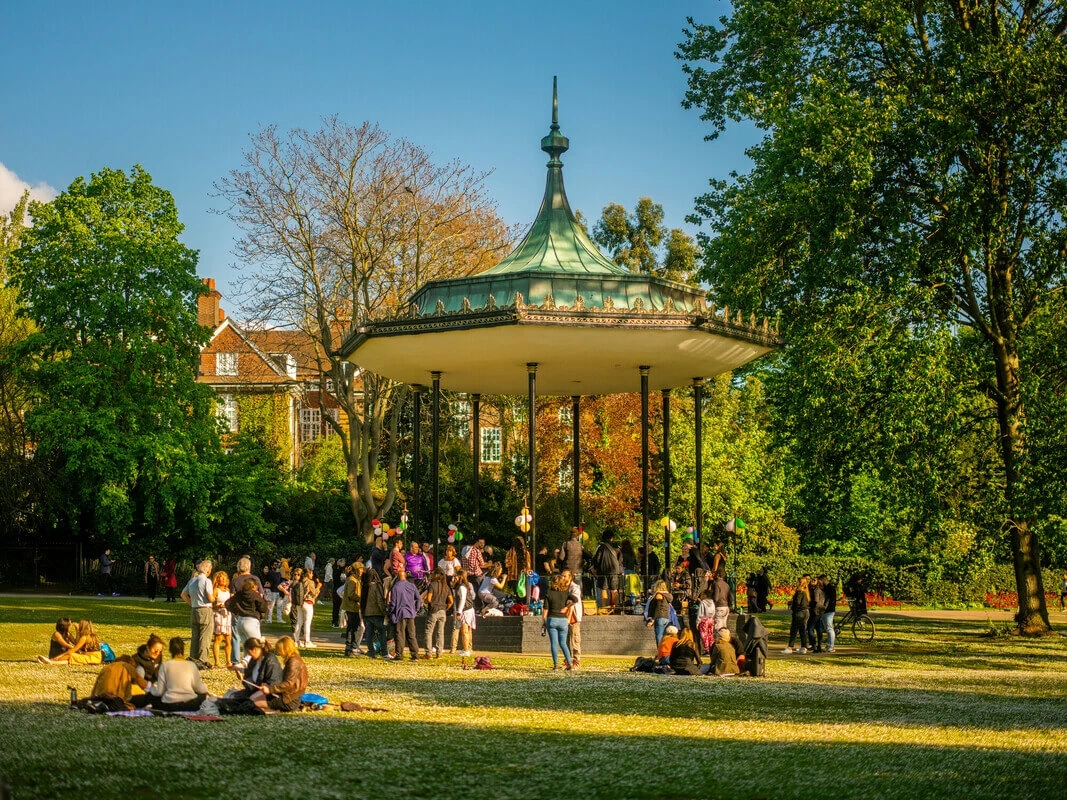
Hylas and the Nymph statue
Hylas and the Nymph is a Grade II listed, bronze statue of a boy and a mermaid on a stone pedestal set in a stone-rimmed pond. It stands in St. John's Lodge Garden, northeast of the Inner Circle.
This statue was donated by the Royal Academy of Arts in 1933 and designed by Henry Pegram.
In Greek mythology, Hylas was one of the Argonauts, the heroes who accompanied Jason on the quest for the Golden Fleece. During the journey, Hylas was kidnapped by the nymph of spring and never seen again.
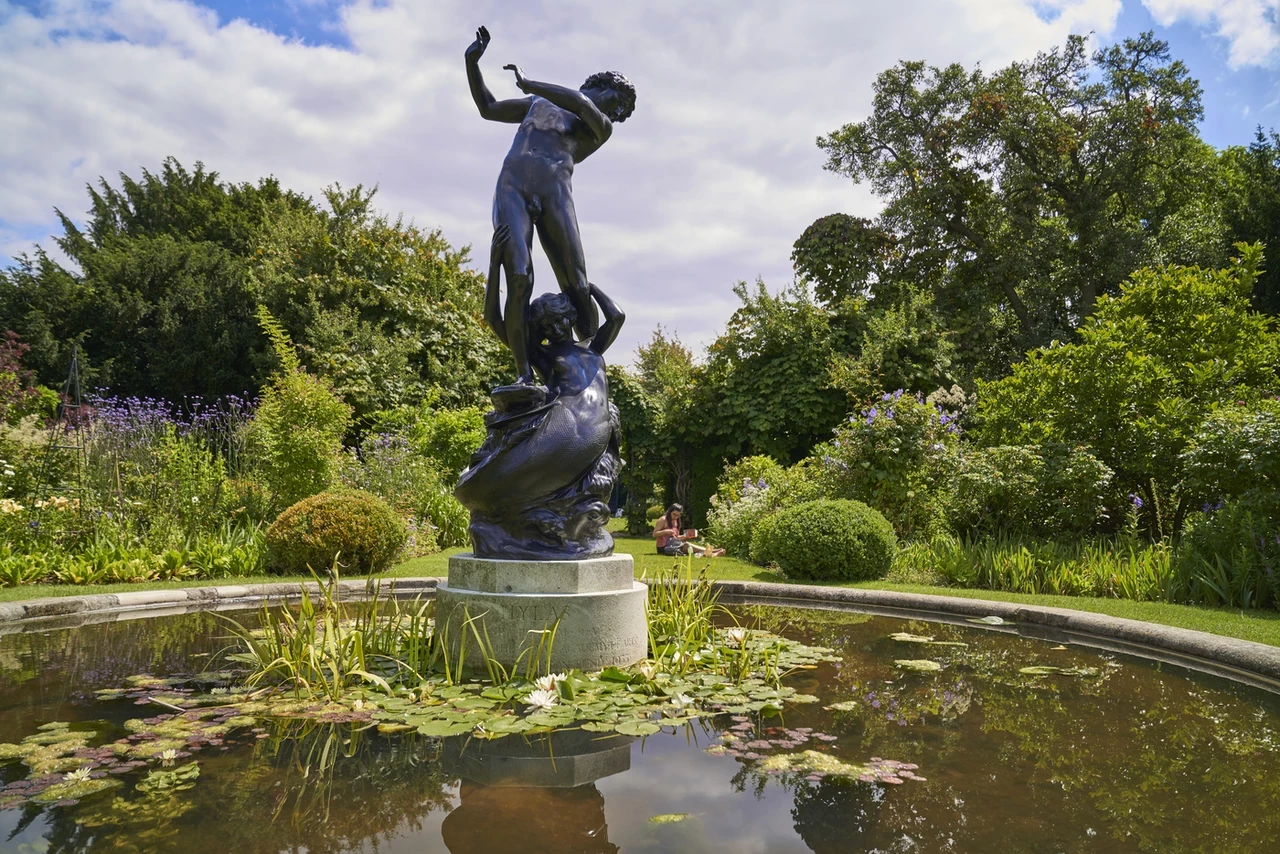
Iolo Morganwg memorial plaque
On 21 June 2009, a plaque was laid on the top of Primrose Hill to mark the site of the first meeting of the "Gorsedd of Bards of the Island of Britain" in its modern form and to commemorate its founder, Iolo Morganwg.
The Gorsedd of the Bards of the Isle of Britain is a society of poets, writers, musicians, artists and individuals who have made a notable contribution to the Welsh nation, language and culture. The first ever Gorsedd was held on midsummer's day, 21 June, 1792.
Iolo Morganwg (1747-1826), also known as Edward Williams, was a poet, political radical and one of the founders of the Unitarian movement in Wales.
The Gorsedd now lives on as part of the annual cultural festival, The National Eisteddfod.
Find out more about the Gorsedd of the Bards of the Island of Britain from the National Museum Wales.
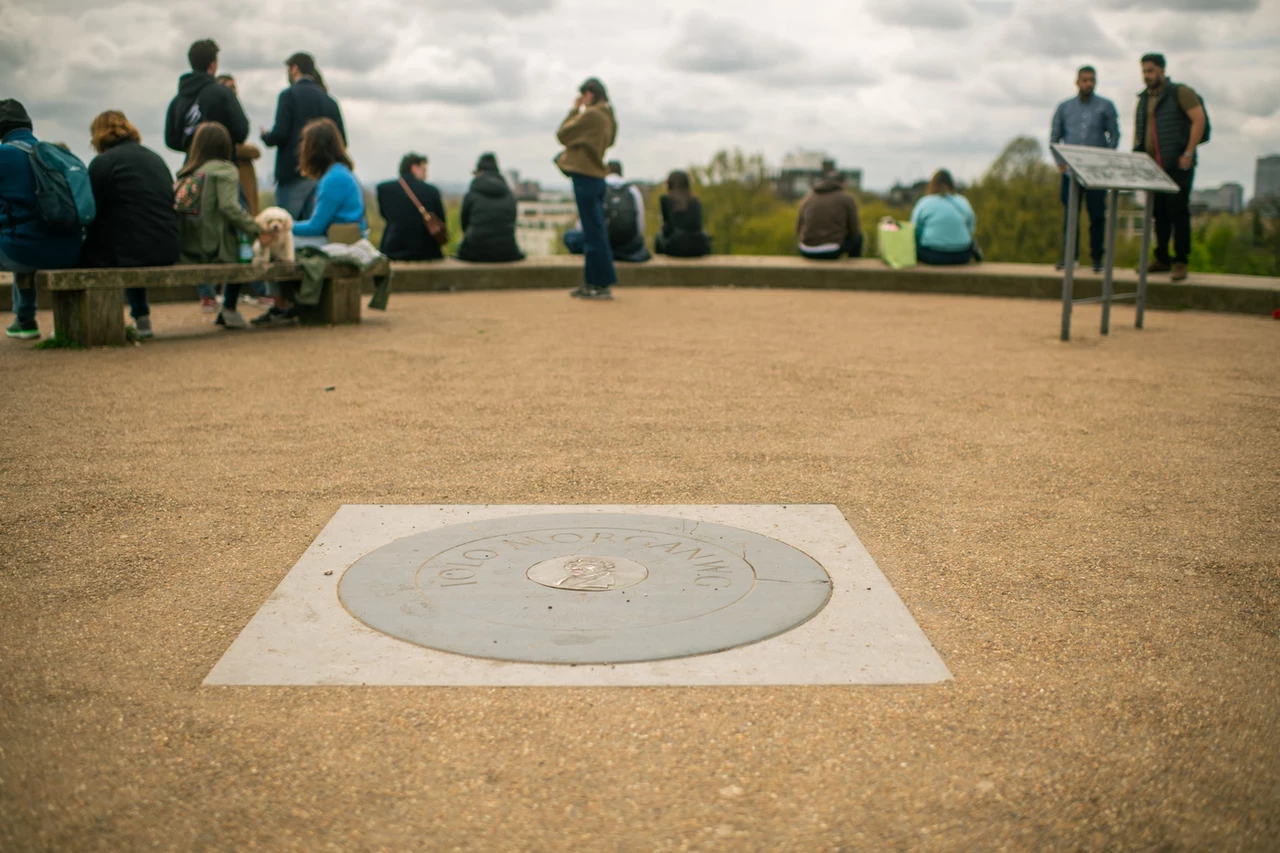
Jubilee Gates
The Jubilee Gates are grand iron and gilded semi-circular gates that were installed to mark the Silver Jubilee of King George V and the official opening of Queen Mary's Gardens in 1935.
Located near York Bridge off the Inner Circle, The Jubilee Gates act as the main entrance to Queen Mary's Gardens.
The gates, which are Grade II listed, were donated by Sigimund Goetze, a wealthy and successful artist who lived in Grove House (now Nuffield House) on the northern perimeter of the park from 1909 to 1939.
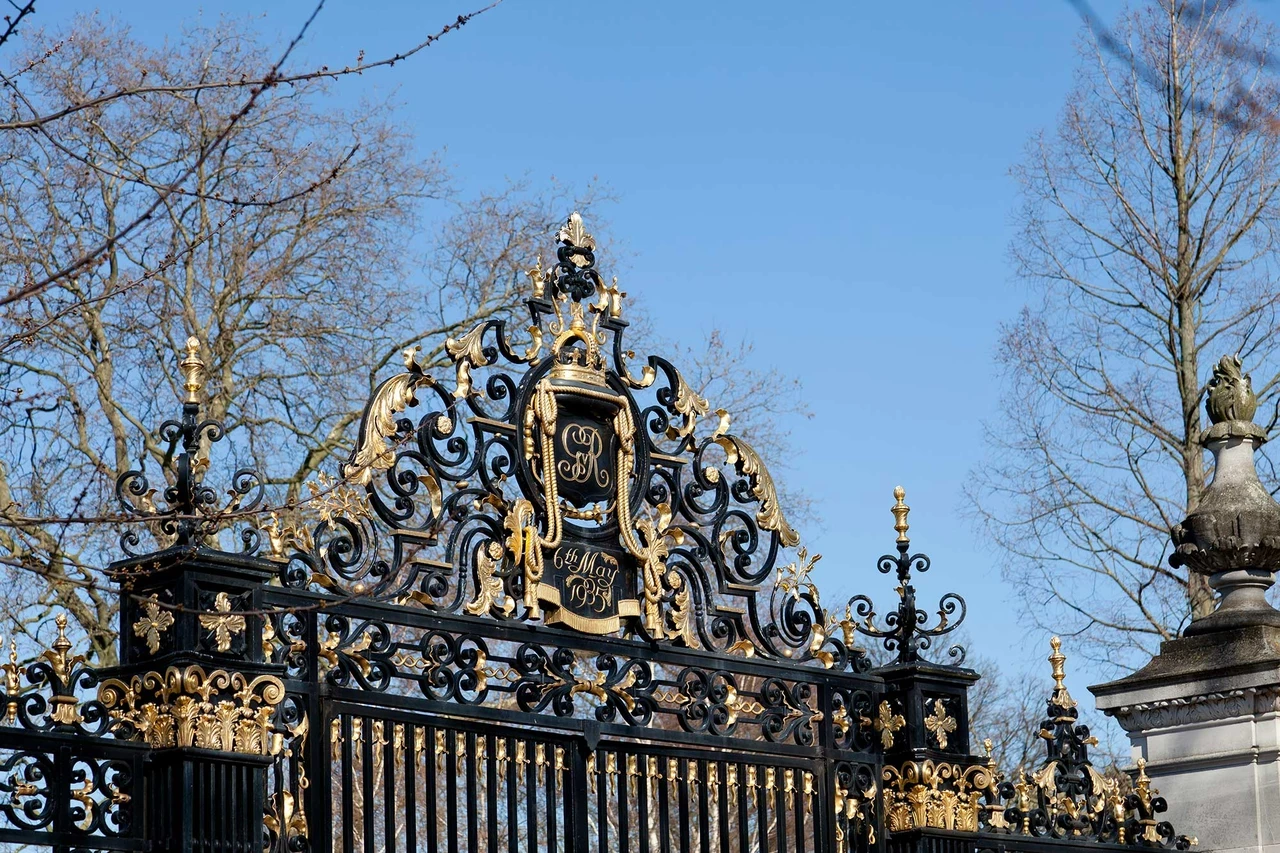
Ready Money drinking fountain
The Ready Money drinking fountain is a four-sided granite and marble gothic drinking fountain that gets its unusual name from Sir Cowasjee Jehangir, whose nickname was Ready Money. It is located in the centre of the Broad Walk.
Ready Money was a wealthy Parsee industrialist from Bombay who donated it to The Regent's Park in 1869 as a thank-you for the protection that he and fellow Parsees received from British rule in India.
The sculpture contains 10 tonnes of Sicilian marble and four tonnes of red Aberdeen granite. It was unveiled by Princess Mary of Teck, later Queen Mary after whom Queen Mary's Gardens are named.
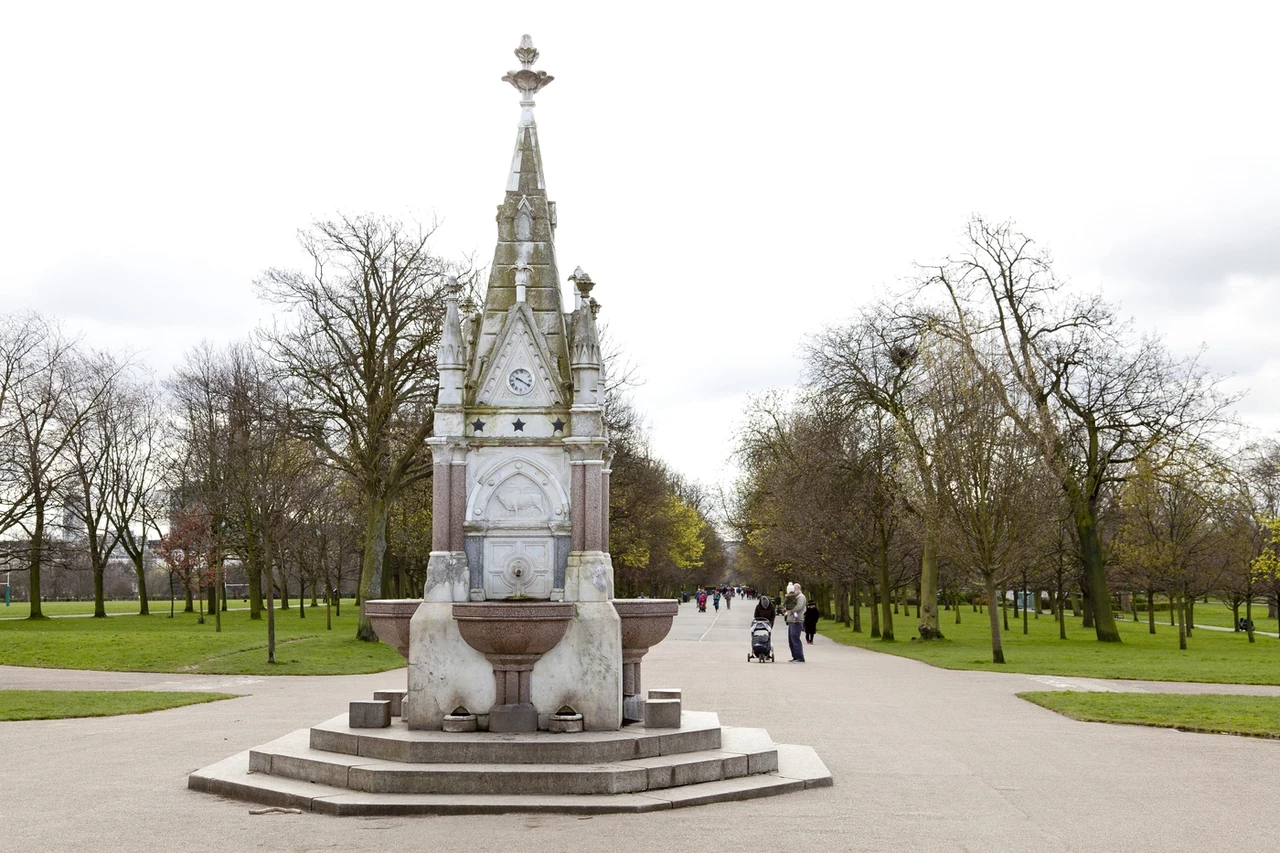
Triton fountain
The Triton fountain is a group of bronze sculptures that depict a sea god or triton blowing on a conch shell with two mermaids at his feet. The group stand in the centre of a round pool.
It is located opposite the Jubilee Gates at the end of the central walk which runs through the middle of Queen Mary's Gardens.
The sculpture group in the Triton fountain was given in Sigismund Goetze's memory by his wife, in 1950. Goetze was a wealthy and successful artist, who from 1909 to 1939, lived in Grove House (now Nuffield House) on the northern perimeter of The Regent's Park. He had a studio in the grounds and painted the walls of the music room with scenes from Ovid's Metamorphoses. His wife was the founder of the Constance Fund which donated fountains to Green Park and Hyde Park.
The fountain is on the site of a huge conservatory measuring over 1,700 sq m. The conservatory belonged to the Royal Botanical Society, which gave up the site in 1931.
The sculptures were designed by William McMillan, who also designed one of the fountains in Trafalgar Square.
